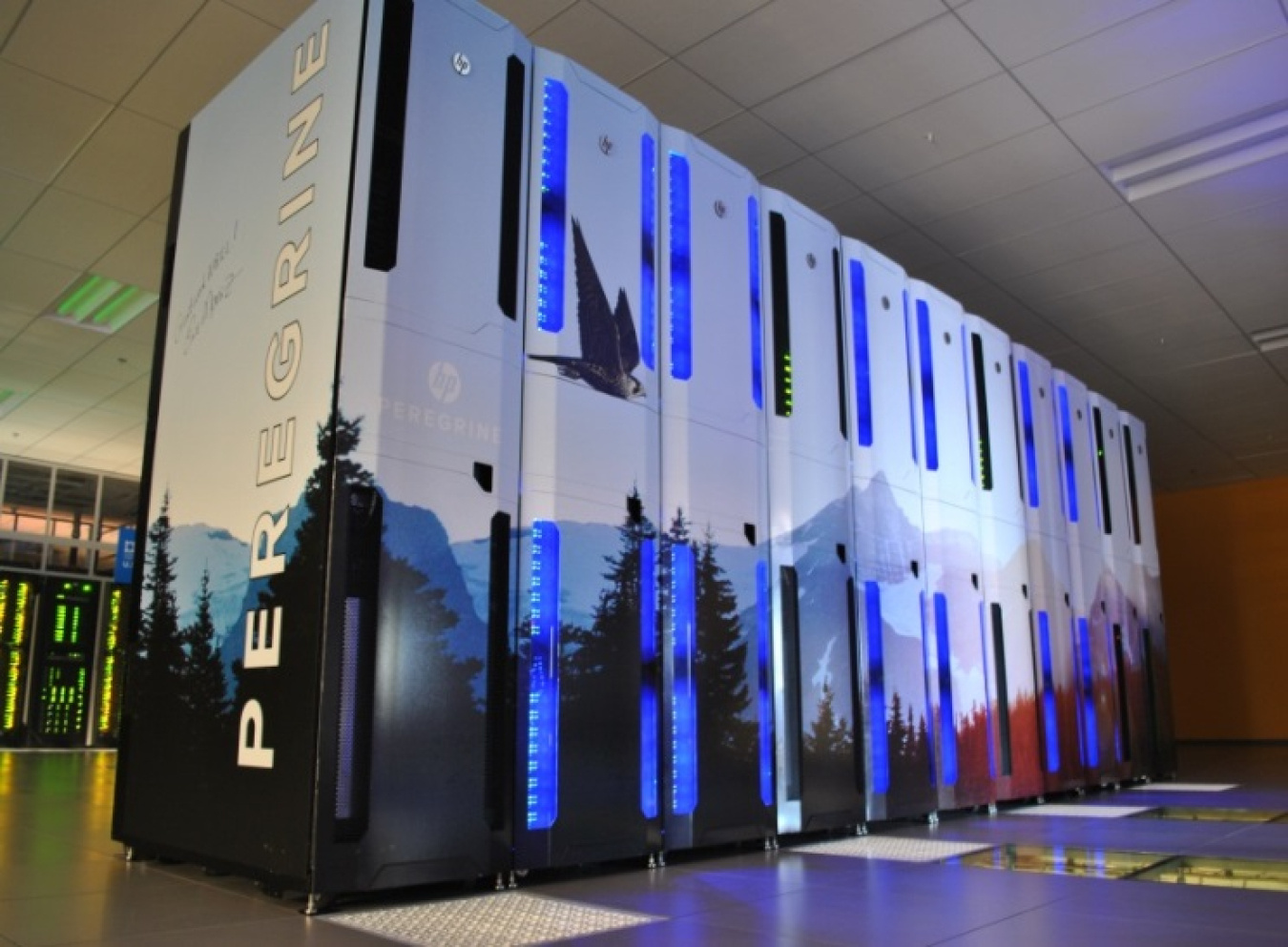
NREL teamed with Hewlett-Packard (HP) and Intel to develop the innovative warm-water, liquid-cooled Peregrine supercomputer, which not only operates efficiently but also provides hot water to the ESIF, meeting all of the building's heating needs.
The Energy Systems Integration Facility (or ESIF) is the nation's premier facility for research, development, and demonstration of the components and strategies needed to optimize our entire energy system. It was established in 2013 by the U.S. Department of Energy, Office of Energy Efficiency and Renewable Energy, on the campus of its National Renewable Energy Laboratory and is a designated U.S. Department of Energy user facility. NREL teamed with Hewlett-Packard (HP) and Intel to develop the innovative warm-water, liquid-cooled Peregrine supercomputer, which not only operates efficiently but also provides hot water to the ESIF, meeting all of the building's heating needs.
Peregrine is the first installation of the new HP Apollo Liquid-Cooled Supercomputing Platform, and it provides the foundation for numerical models and simulations that are enabling NREL scientists to gain new insights into a wide range of energy systems integration issues. This innovative high-performance computer (HPC) can do more than a quadrillion calculations per second as part of the world's most energy-efficient HPC data center.
As HPC systems are scaling up by orders of magnitude, energy consumption and heat dissipation issues are starting to stress the supporting systems and the facilities in which they are housed. But unlike most other computers that are air-cooled, Peregrine is cooled directly with warm water, allowing much greater performance density, cutting energy consumption in half, and creating efficiencies with other building energy systems. Peregrine's warm-water cooling system eliminates the need for expensive data center chillers and heats the water to 103°F, allowing it to help meet building heating loads. At least 90 percent of the computer's waste heat is captured and reused as the primary heat source for the ESIF offices and laboratory space. The remaining waste heat is dissipated efficiently via evaporative cooling towers.
The ESIF is designed to address the key challenge of delivering distributed energy to the grid while maintaining reliability. It's a complex problem involving systems within systems and leveraging Big Data—and the Peregrine serves as a powerful new tool in NREL's ongoing work to find a solution. But although it's a cutting-edge facility, the ESIF is not some esoteric experimental building tucked away from the public. It was designed for partners—and since it opened for business, NREL's world-class facility has attracted many commercial partners.
Not surprisingly, the capabilities of the ultra-efficient HPC data center are placing NREL in the spotlight. It earned a 2014 R&D 100 Award and helped the ESIF earn R&D Magazine's 2014 Laboratory of the Year award and the Energy Department's 2013 Sustainability Award.

